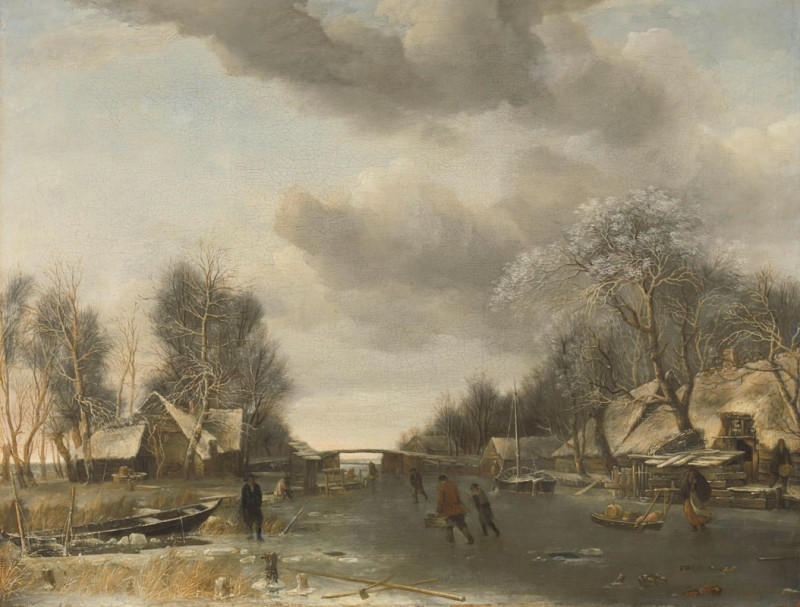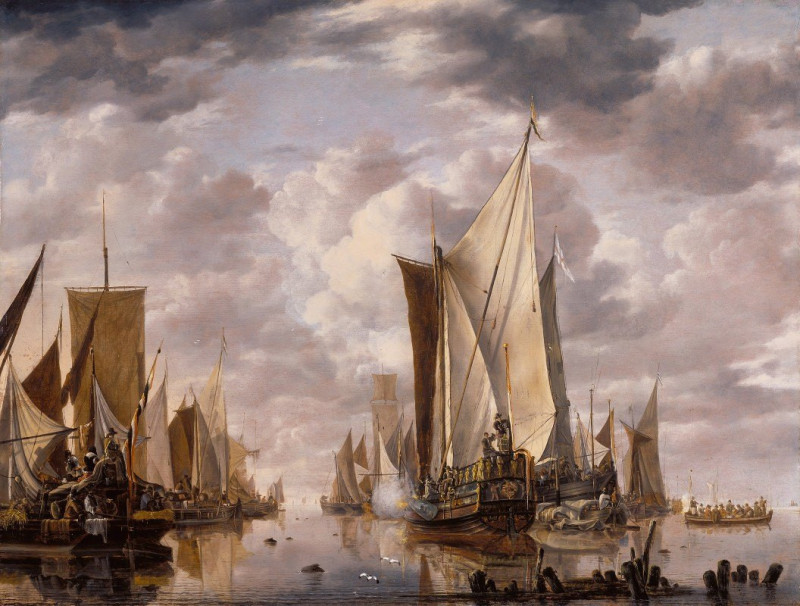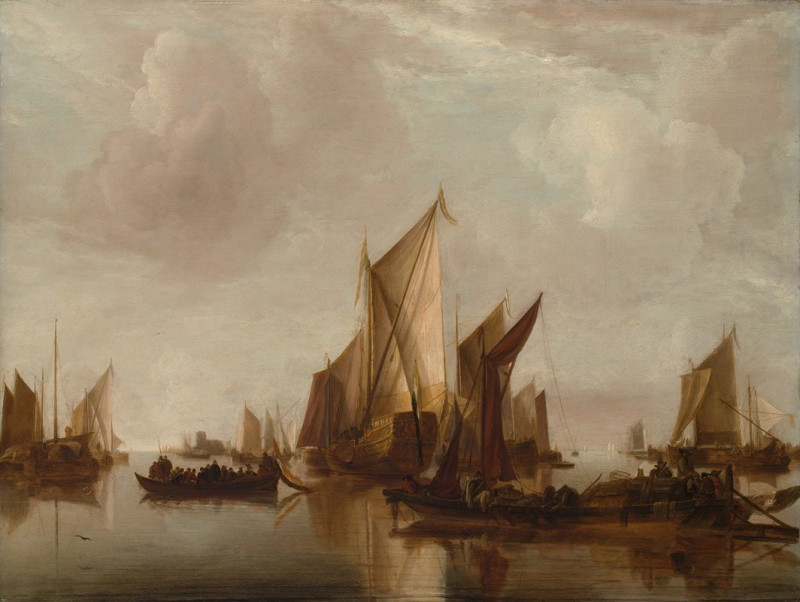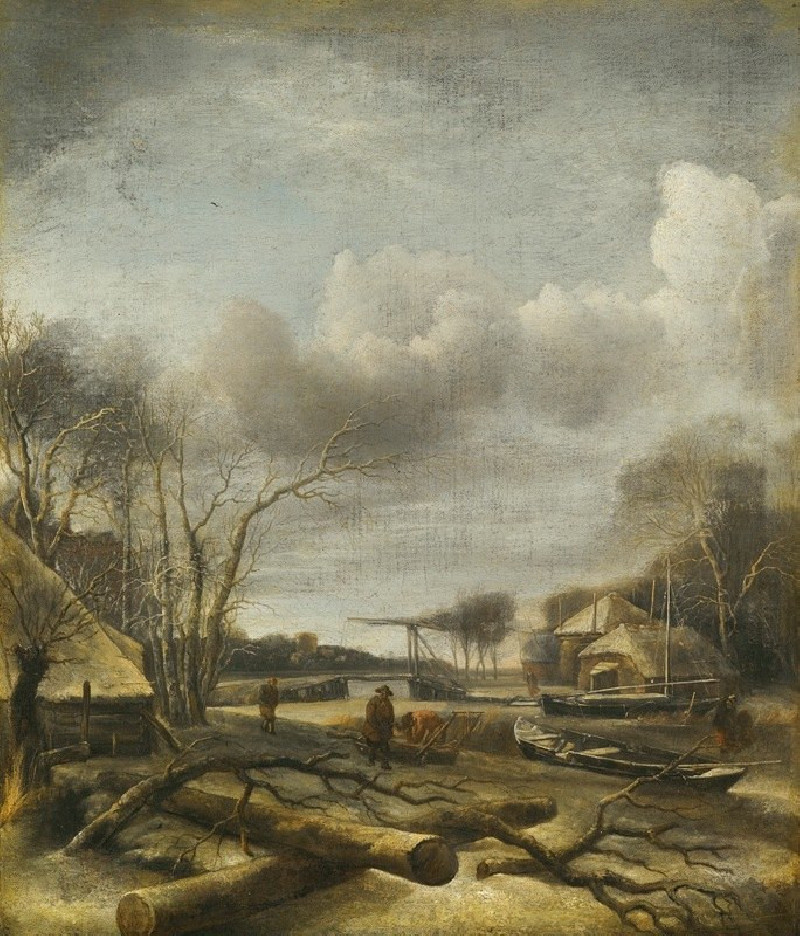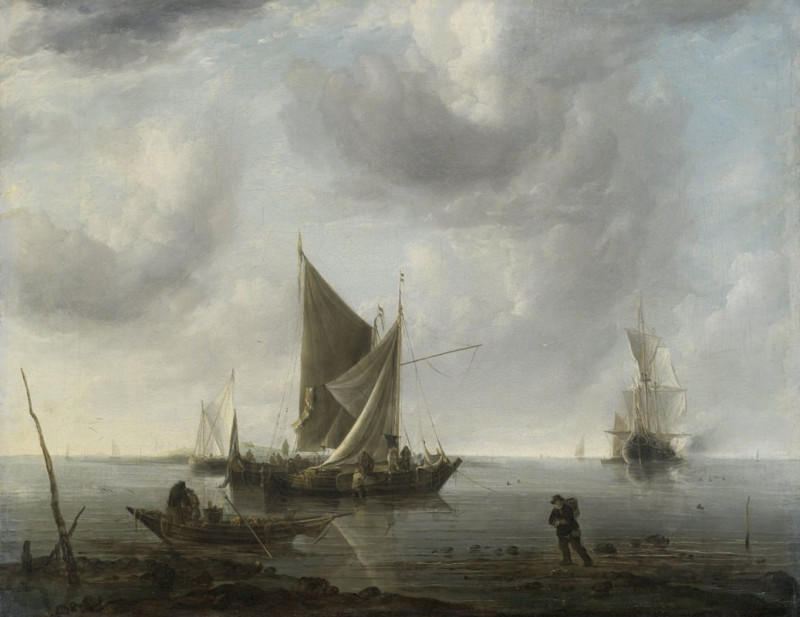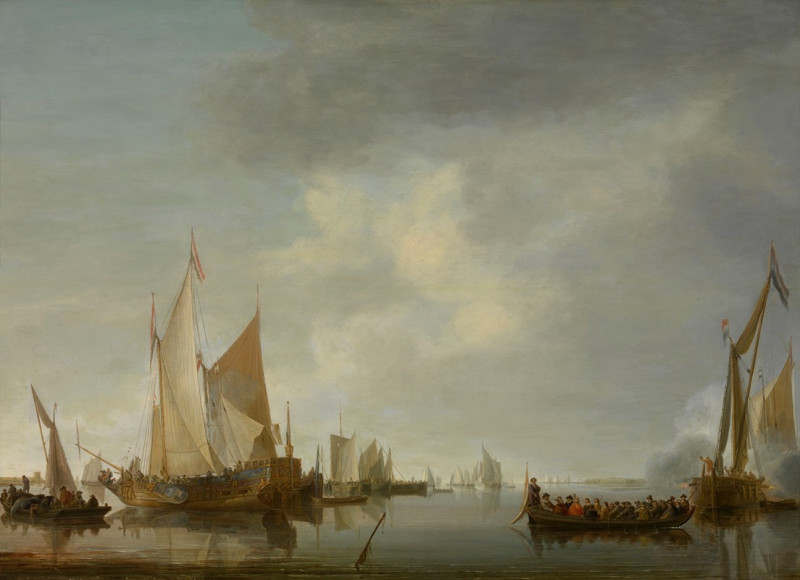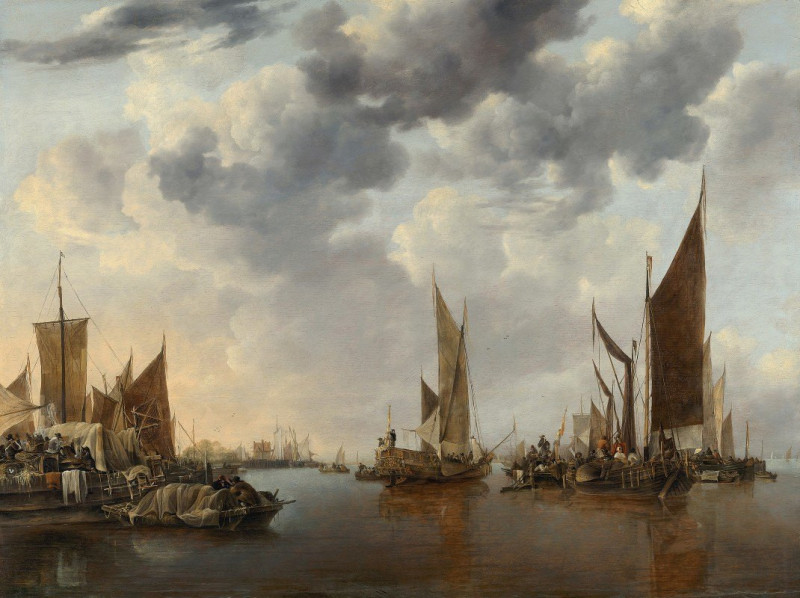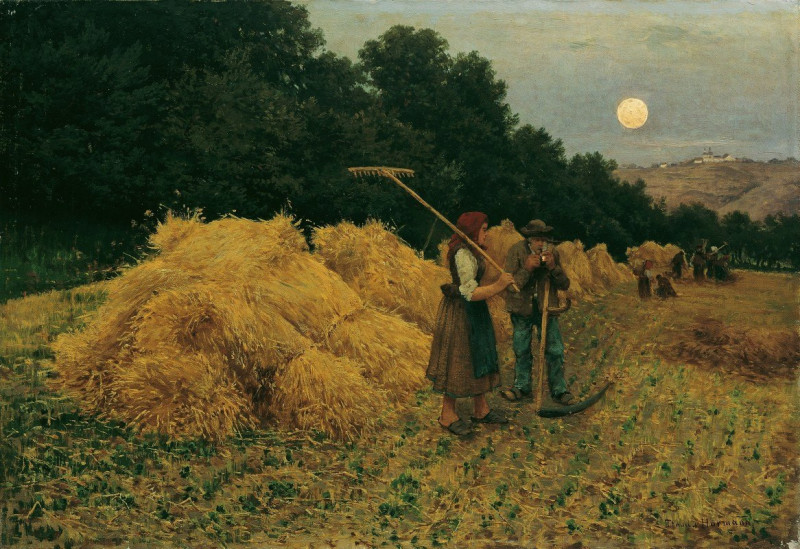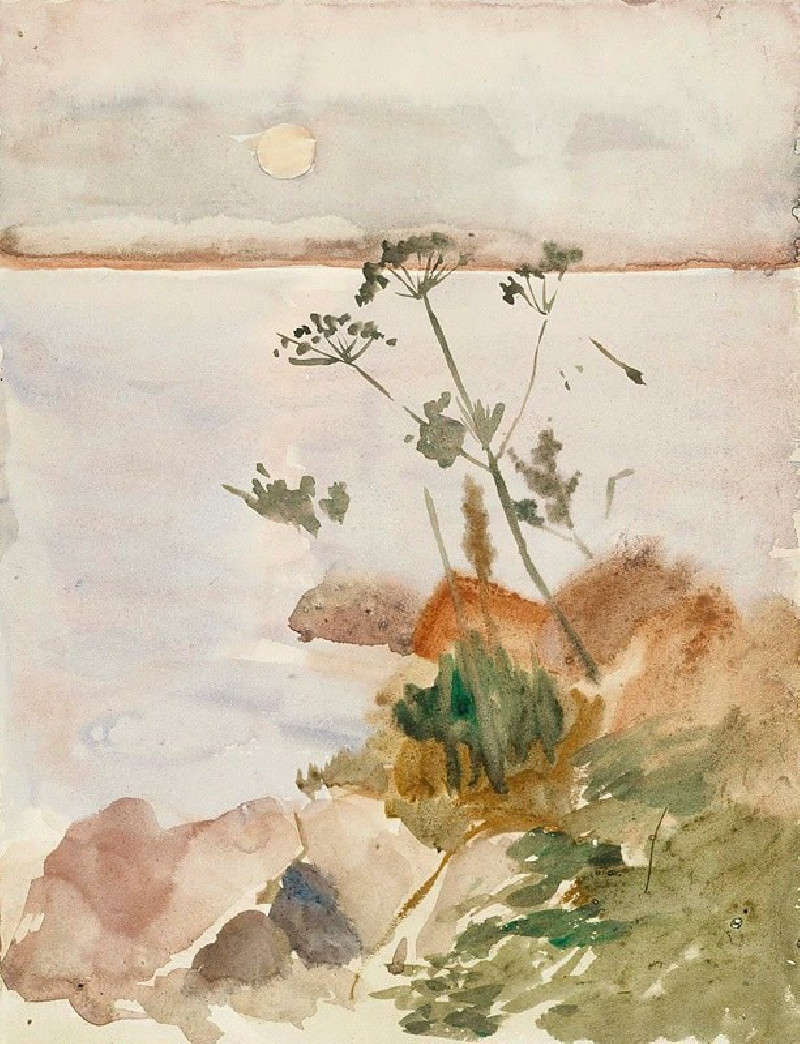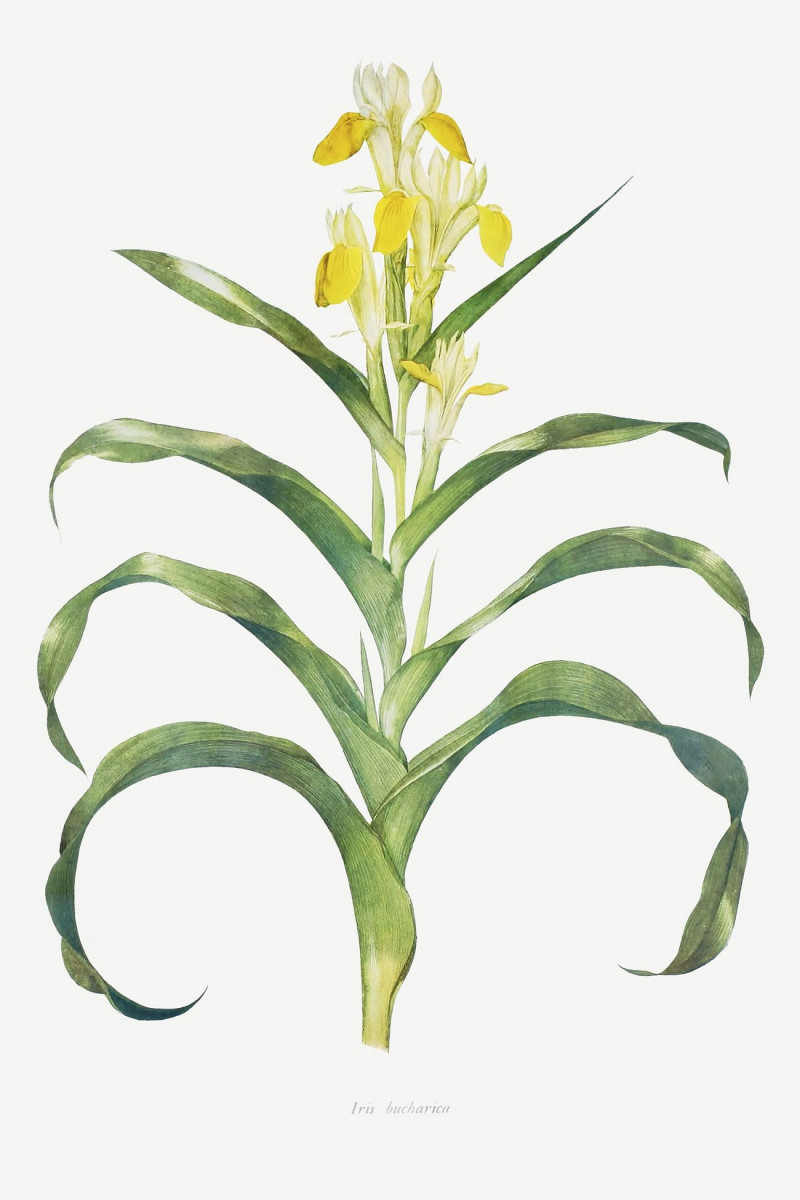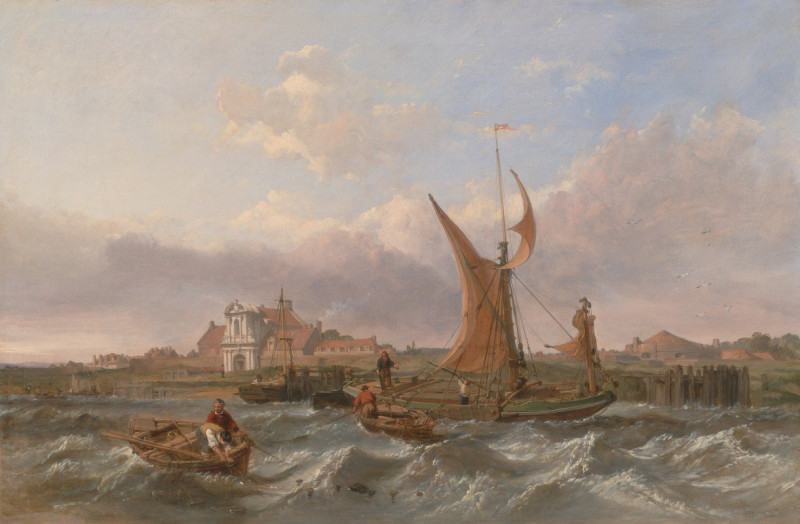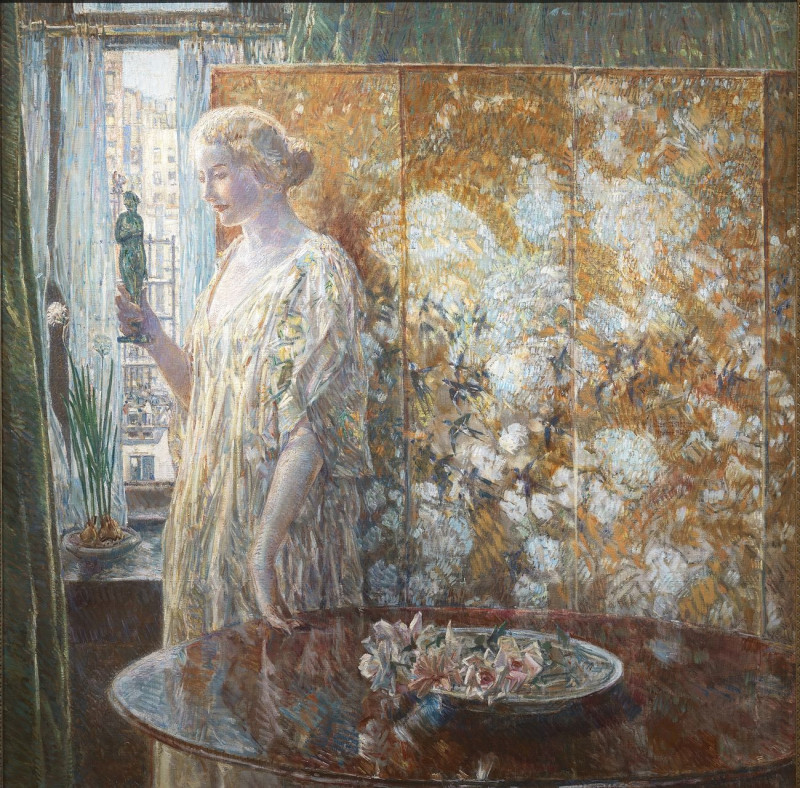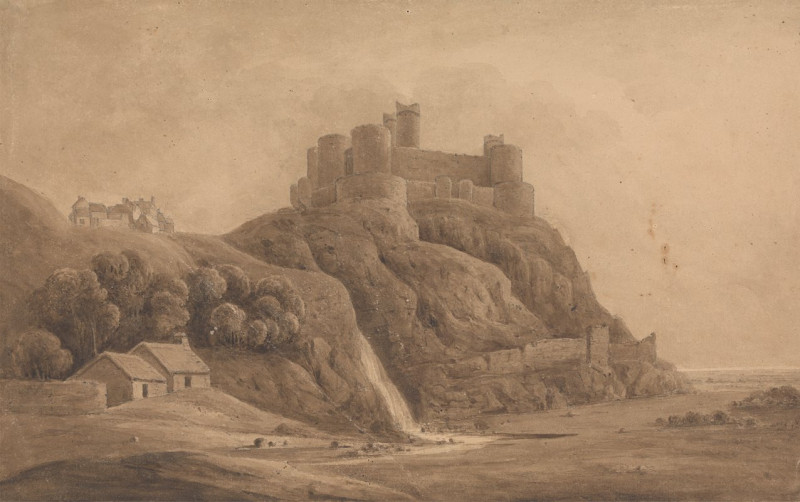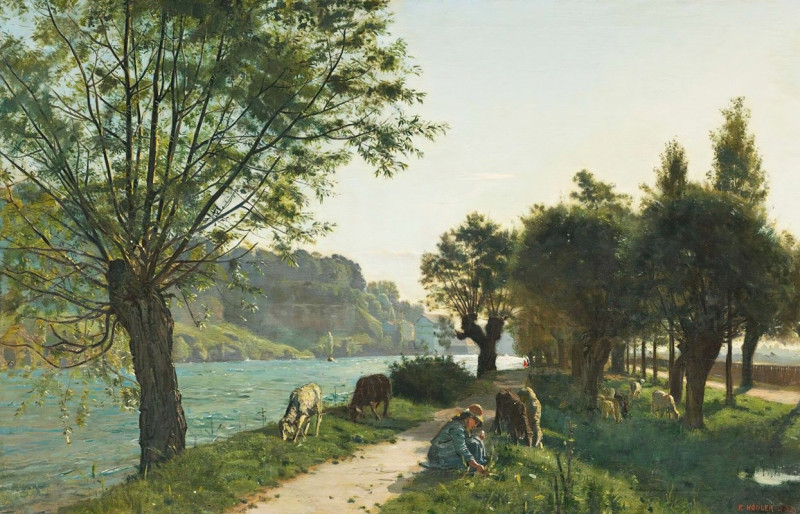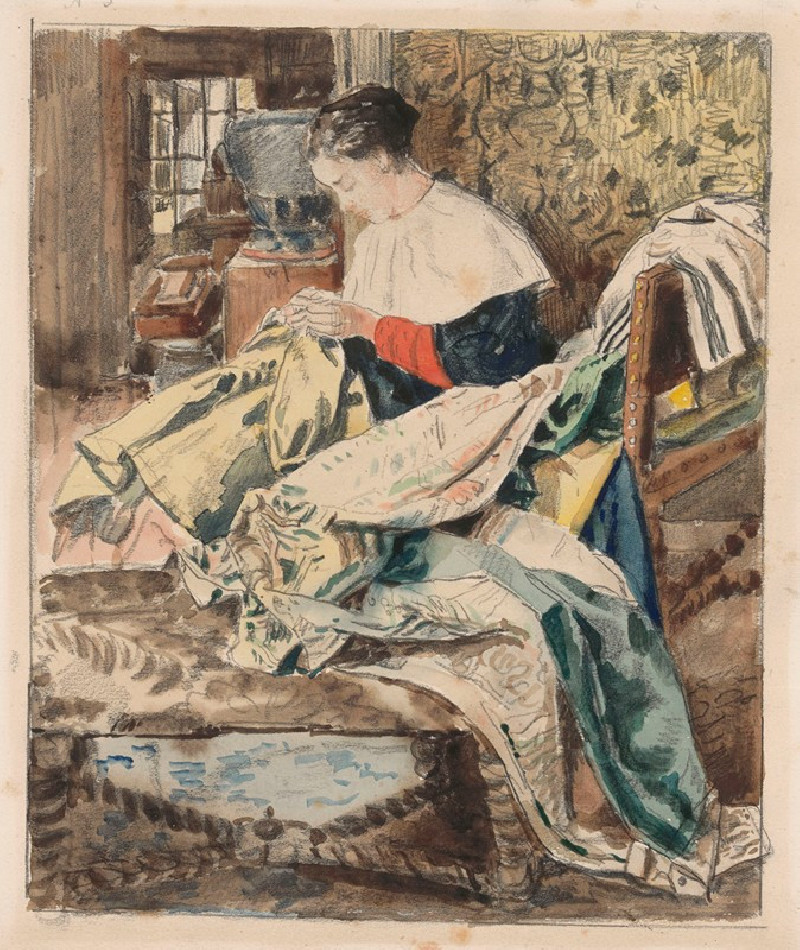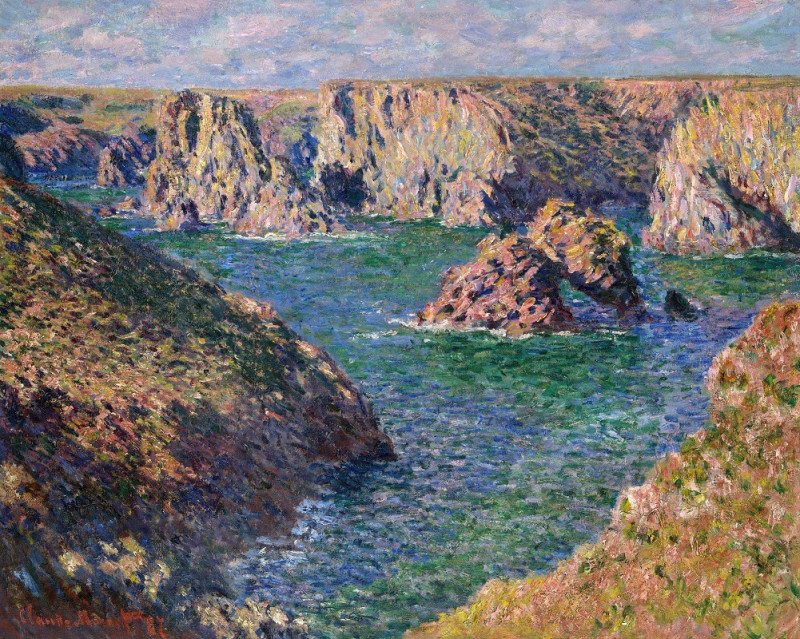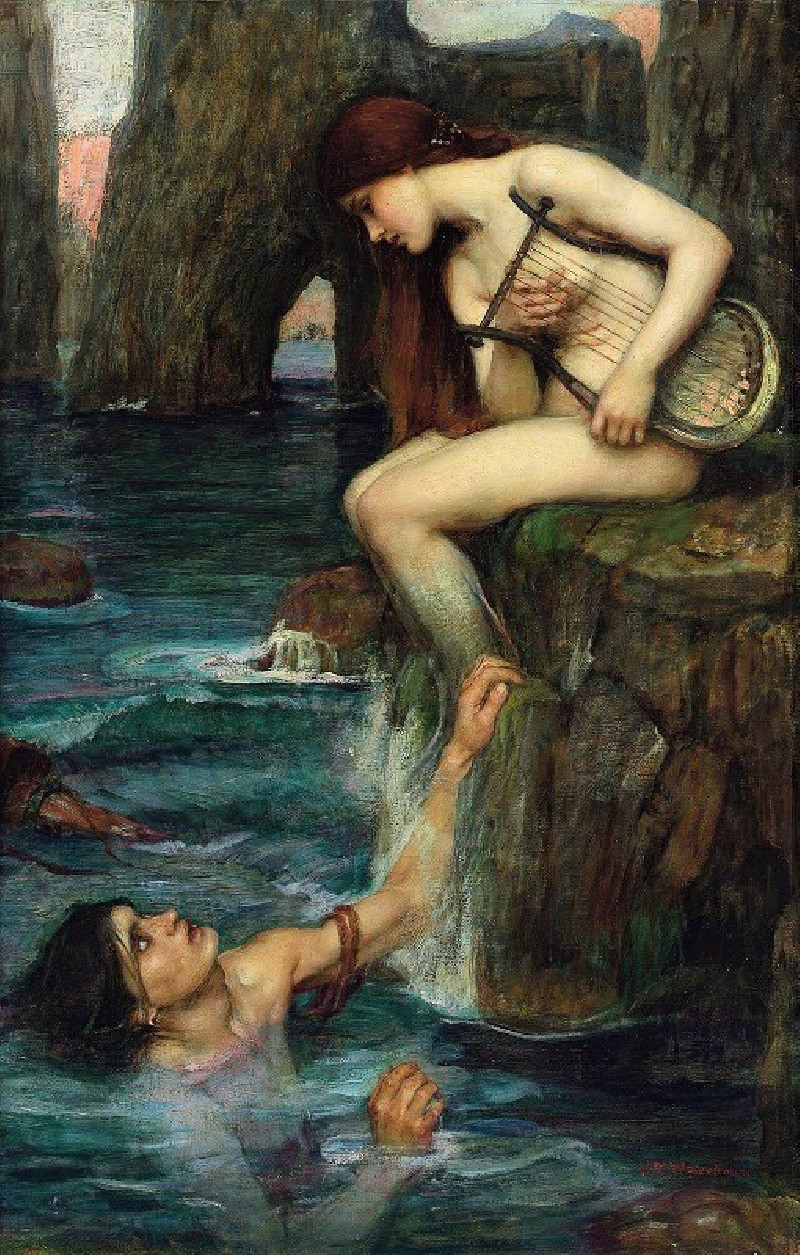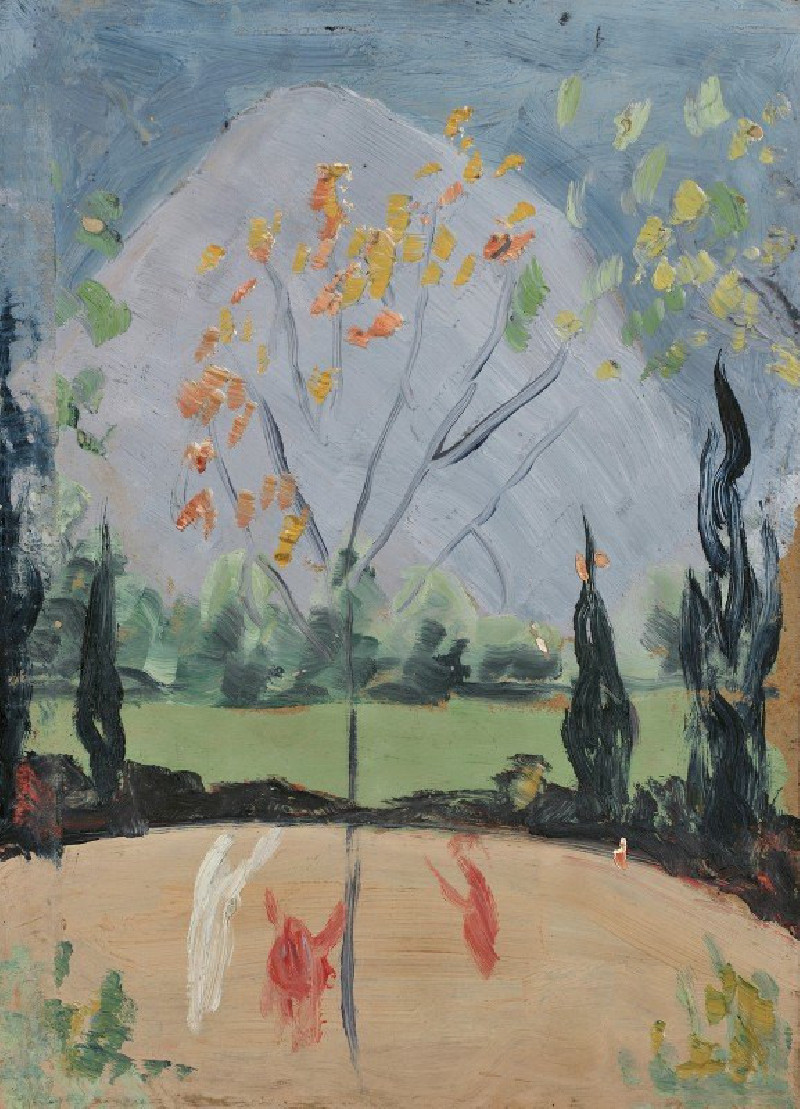The Home Fleet Saluting the State Barge (1650)
Technique: Giclée quality print
Recommended by our customers
More about this artwork
Jan van de Cappelle, a renowned Dutch artist known for his mastery in depicting serene marine and river scenes, presents a captivating portrayal of solemnity and celebration in his work "The Home Fleet Saluting the State Barge." Crafted in 1650, the painting showcases a tranquil yet stately event on the water, characterized by an impressive attention to detail and an evocative use of light and color.In the foreground, the state barge, adorned with flags and populated by dignitaries, is the focal point of this maritime procession. The barge is elegantly constructed, with details that highlight the luxuriousness appropriate for state officials or royalty. Surrounding the state barge are various ships of the home fleet, each briskly adorned with sails and packed with crew members. The ships are saluting the barge with a gun salute, evident from the puffs of smoke near the water, which adds a dramatic flair to the serene waterway.The background features a soft, expansive sky that mirrors the quietude of the water below. Delicate clouds, painted with skillful gradations of blue and white, suggest a gentle breeze - a typical characteristic of van de Cappelle's art, capturing the ephemeral beauty of the skies. The calm water subtly reflects the ships and the sky, enhancing the overall peacefulness of the scene.This painting not only exemplifies Jan van de Cappelle's expertise in marine art but also serves as a wonderful representation of 17th-century Dutch naval pride and the ceremonial aspects of maritime life. It imbues viewers with a sense of witnessing a significant, historical moment, held in the placid waters under a vast, contemplative sky.
Delivery
Returns
Jan van de Cappelle was a Dutch Golden Age painter of seascapes and winter landscapes, also notable as an industrialist and art collector. He is "now considered the outstanding marine painter of 17th century Holland". He lived all his life in Amsterdam, and as well as working as an artist spent much, or most, of his time helping to manage his father Franchoy's large dyeworks, which specialized in the expensive dye carmine, and which he eventually inherited in 1674.


